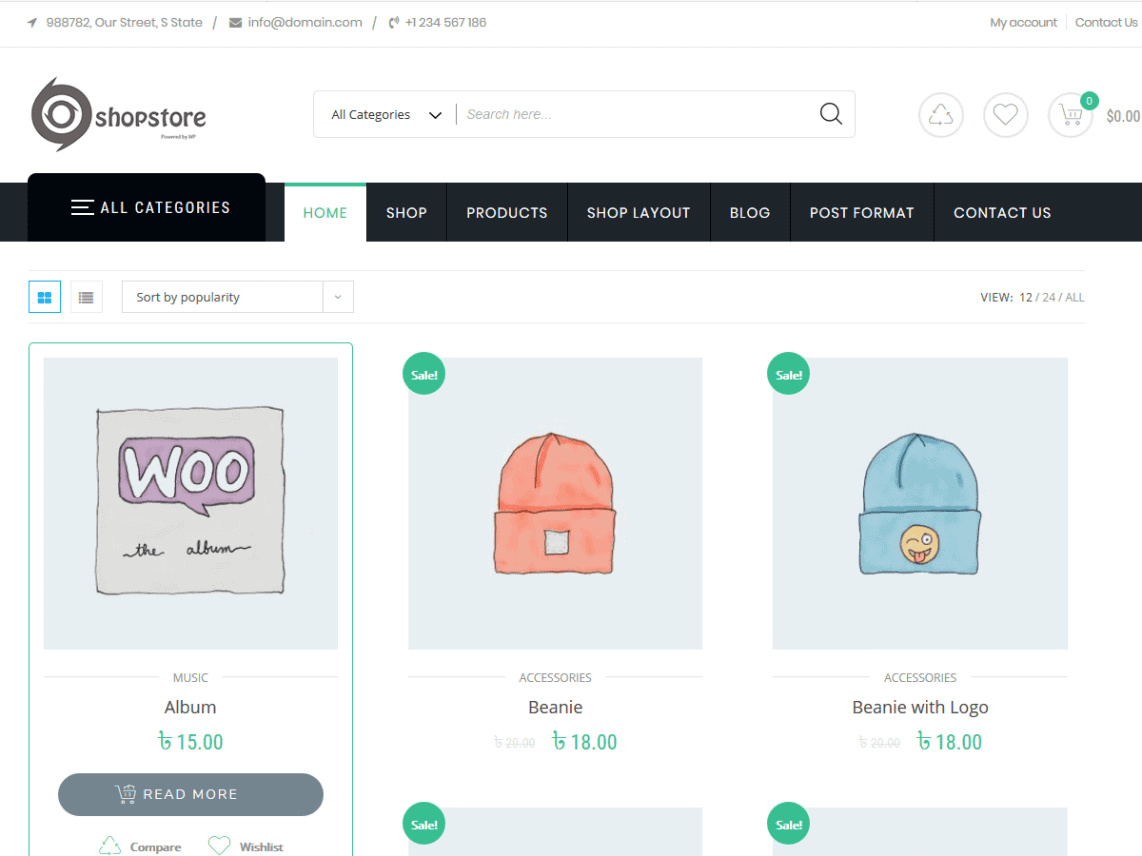NGINX and LiteSpeed are common household names to people running websites. You can hear them everywhere. NGINX competed with Apache back in the day, which was a clear win for speed-wise.
But, after LiteSpeed release in 2003, NGINX got real competition. LiteSpeed could work as fast and do a lot more. You would think that its versatility would make it very popular among websites, but it has not been the case.
NGINX and Apache were free and open-source web servers. LiteSpeed required a subscription to service websites with enough RAM and CPU. Later in 2013, they released OpenLiteSpeed, the free, open-source version.
If you are looking for a host yourself and wondering which one to go for, keep reading to find out more.
What is NGINX?
Traditional websites use Apache, but newer and modern hosting services use NGINX. So, if you are hearing about it for the first time, NGINX is a popular open-source, high-performance web server.
Its primary function was for HTTP web serving. But, it has now advanced to other functions. Now, you can use it as a reverse proxy for HTTPS, HTTP, IMAP, POP3 protocols, among others. It is also an HTTP load balancer email proxy for IMAP, POP3, and SMTP.
Generally, serves functions such as:
- Improving security
- Facilitating scalability
- It makes the busiest websites on the internet available
- Improves content and application delivery
Apache could not keep up with the requests in light of concurrency and grew slow. That was why Igor Sysoev created NGINX. He aimed to meet the challenge of handling 10,000 requests simultaneously.
So, this webserver offers ah4synchronous and event-driven architecture. This feature makes NGINX a reliable web server for speed and scalability.
Pros and Cons of Using NGINX
Using NGINX has its advantages and disadvantages.
Pros
- It is a high-performance HTTP server
- This open-source web server is easy to configure
- It also acts as a mail proxy, load balancer, and HTTP cache
- Scalable and free
- It is fast, with high latency
Cons
- To enjoy the advanced features of the server, you require a subscription
- Don’t support HTTP/3
What is LiteSpeed?
LiteSpeed gained public attention because of its high performance. It did so without compromising the security or compatibility while saving on resources. This means that can perform better and is safer while taking up less RAM and CPU.
It is so popular that over 12.2% of active websites on the internet use LiteSpeed. This web server is scalable. It also provides better security with its built-in anti-DDoS capabilities.
Some of the top features of LiteSpeed include:
- Compatibility with Apache server, facilitating drop-in replacement
- Zero-downtime server management
- An event-driven architecture for handling concurrent connections
- Edge slide includes helping split a dynamic page into fragments for better processing
- LiteSpeed Cache to improve performance of dynamic content acceleration
- Control panel compatibility with Interworx, Plesk, cPanel, DirectAdmin, and VirtualAdmin
- Compatibility with Apache’s ModSecurity
Pros and Cons of Using LiteSpeed
Using LiteSpeed has its share of advantages and disadvantages as well.
Pros
- Compatible with Apache without additional code customization
- Effective RAM and CPU space usage
- Great for static content
- Fast PHP processing
- Enhanced security with the built-in DDOS protection system
Cons
- Expensive as you have to pay to power your server with enough CPU or RAM or even host many websites
Main Differences between GNINX and LiteSpeed
For a careful analysis of both webserver, we will be answering questions such as:
Between NGINX and LiteSpeed, which is faster. Which is easier to use?
i. Speed tests
When using those servers in small package fetching, LiteSpeed is faster. Besides, nginx uses 100% CPU, while LiteSpeed uses less than 50%.
After raising the request parameter, LiteSpeed uses 100% CPU. But, NGINX reserves an extra 1GB of memory to complete the same task and is a tad slower than LiteSpeed when fetching a single file, while it uses about four times more CPU.
This and struggles with high bandwidth can help you conclude. LiteSpeed has better speeds.
ii. In PHP applications
Consider running the following PHP file with both LiteSpeed and NGINX
Echo “Hello World!”;
When you test the load times on both servers, you notice that Litespeed is faster. It can complete the task within 26 seconds. NGINX takes a little over 100 seconds to achieve the same request.
iii. Caching
Cache is data that helps your result pages load faster. Both Servers have a cache. LiteSpeed has a built-in cache module. But, NGINX has a FastCGI Caching module.
LiteSpeed has a free cache plugin compatible with LS and OLS servers. This plugin brings in features that speed up your WordPress website. This plugin is also easy to use, even without any coding skills.
The LiteSpeed’s QUIC.cloud service integrates the plugin seamlessly.
NGINX does not have a compatible plugin. But, it does have micro-caching capabilities. The good news is that these cache configurations can rival LiteSpeed dynamic cache. But, they are not easy to configure.
You need to know your way with NGINXconfigurations. Also, you have to write what you need the cache to do in the code. If you are looking for a web server to host your website, then NGINX becomes problematic to use. This means integrating cache in your site becomes a challenge.
When enabled, these caching mechanisms improve the website’s performance. A LiteSpeed website reduces its load time significantly. Yet, the change is not that huge for NGINX, whose performance improves marginally.
iv. Security
LiteSpeed can do many things to produce high performance. One of them is including an anti-DDoS security measure. These are rules that protect your website from attacks. Both web servers have the ModSecurity rule.
v. Apache compatibility
Many of the traditional websites run on Apache. To upgrade to a modern, faster server, you might need a server that is Apache-compatible. NGINX is not and cannot read .htaccess files. LiteSpeed can read all Apache files, like mod-security.
vi. Stability
Both servers have a lot in common. They both have free and premium services. Also, both include proper protection from many attacks. The premium subscriptions are perfect in their way, but they are expensive.
If it is your first time, Apache is a good option. The problem comes in later when you want to upgrade to a faster, higher-performing web server.
As for the free software, OpenLiteSpeed is quite unstable. The company is withholding most of the open-source code. This makes their features limited. Even though LiteSpeed can read the .htaccess files, it cannot host high-traffic sites. This is because you have to restart the OLS server any time you alter any settings on the .htaccess file.
Accessing multi-site servers is even more challenging. LiteSpeed loses its significant advantage of faster load times and Apache compatibility.
But, NGINX has a stable performance when handling many sites. If you have a high-traffic site and want to belong to an open-source community, NGINX is the server for you
Which is better?
When considering a WordPress-based website, you can choose to go traditional with Apache. With proper configuration, Apache can perform better than NGINX or OpenLiteSpeed. If you want a better alternative, there is the choice of LiteSpeed and NGINX.
LiteSpeed is an excellent option for smaller VPSs. They are fast, multi-functional, and have attractive features. Yet, they have a single core limitation. This means that if you want a dynamic site running at 20+ cores, your options exclude LiteSpeed.
If you run many sites, then NGINX is the server for you. The problem comes in the cache setting. LiteSpeed is easy to configure because of the compatible plugins available to WordPress. But, NGINX is not the same. Their difference in performance is significant. But NGINX using FastCGI is an excellent competition to LiteSpeed.
Drawing a definitive conclusion on which is better could be challenging. Although considered slower than LiteSpeed, NGINX can improve performance with the cache. FastCGI cache is reliable and built-in.
Conclusion
After the discussion, we can draw two conclusions:
- If you run a high-traffic website, NGINX is your go-to server. You can use the FastCGI cache to improve the load times. It is also more stable and already developed. Also, if you do not wish to leave any .htaccess files for your customers to mess with, then go for it.
- LiteSpeed is a good server. But, its functionality is limited for high-traffic sites. For smaller, single-core sites, it outperforms NGINX and Apache. It also has a built-in Cache plugin you can use on WordPress.
As for the support, NGINX has a more substantial open source community than LiteSpeed. A community is critical when you are learning the tricks of the game
LiteSpeed is multi-functional. It can do a lot more than NGINX. But, functionality and performance should match for a VPS to be great. Unfortunately, LiteSpeed is still young, and its open-source software is far from perfect.
When considering the general performance, NGINX will be a better option at any time. But, if you run personal websites with less traffic, you can use LiteSpeed.
Besides, LiteSpeed does offer a good collection of functions that you will not enjoy with NGINX or Apache.


